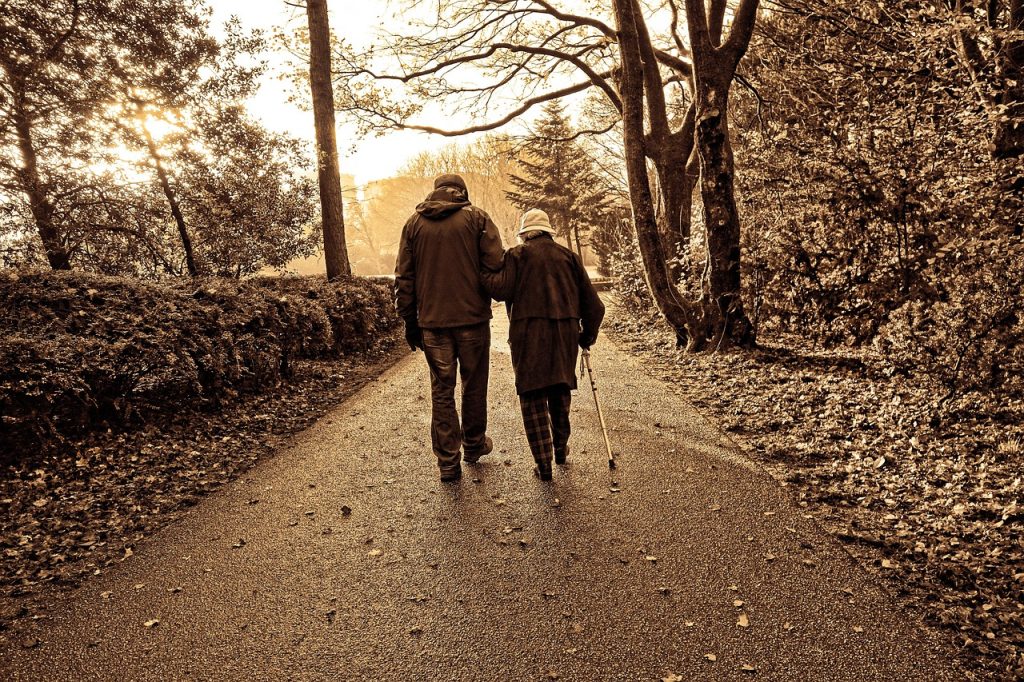Falls can bring significant harm, distress and fear. They are a huge burden on Irish society. Falls cost the Irish economy in the region of €1 billion per year. To put that into perspective; that’s about the same as the entire annual Irish defence budget and x3 more than what the government are spending on infrastructure for active transport (1).
Studies show that 30% of over 65s fall at least once per year (2). Thankfully, most of these falls do not result in the need for medical attention, and only 5% result in a serious injury like a fracture. However, falls do have other “invisible” effects – such as an increased fear of falling and avoidance behaviours, which can result in reduced activity and social engagement.
Why do we fall? Use it or Lose it
Anybody can fall, and most falls don’t result in any problem. It’s when somebody has repeated falls that they really become a concern.
Repeated falls tend to result from years, often decades, of slow deconditioning. There is a level of deconditioning (e.g. reduced fitness, strength, balance, etc) that comes with age, but lifestyle has a huge effect on this. Often today, people do not maintain their normal activity levels as they age. They don’t expose themselves to the things that test them physically, resulting in a slow loss of function. You’ve heard the phrase “Use it or Lose it”??
There are other really important factors that increase a person’s risk of falling – such as poor vision, polypharmacy (i.e. >4 different medications), and underlying health conditions (such as diabetes that affects how well nerves send signals) (3). One important factor to consider is social isolation. Research shows that social isolation is linked to falls, as well as a poorer recovery following an injurious fall (7, 8). Having a variety of connections and relationships is as good as any exercise programme!
On the topic of social isolation – depression and fear of falling are closely linked to falls (9). A big reason for this may be due to the sufferers retreating from society and not being involved in the things that previously got them active and out of the house.
What can I do? Train it to Gain it
Exercise is key. A good programme targetting fitness, strength and balance can have dramatic effects. One such programme, run by physiotherapists in New Zealand, resulted in a 1/3rd reduction in falls and injuries (4). Those who partake in regular consistent exercise, including strengthening and balance exercises, may reduce their risk by close to 50% (5). Taking that in economic terms – that would cover Ireland’s active transport infrastructure for the next 18-months!
Your Health is Interconnected – All for One and One for All
Increasing general activity levels has positive effects that go beyond just reducing falls risk. We know that those who meet their weekly activity recommendations are less likely to fall. The more the better – with those exercising up to 3 hours per week cutting their risk of falls by close to 50% (2). As a bonus, exercise lowers our risk of developing other health conditions, such as heart disease and dementia. Fitter people tend to have better mental health and suffer less from pain. Exercise has magnificent immediate effects too – with mood and clarity of mind getting a quick super-charge.
Not only does increased activity reduce your risk of falling directly, but also indirectly. Those who are more physically active are less reliant on medication (6) – as mentioned, more medications often increase our falls risk.
Social involvement is another key pillar for health. Again, this is linked to a reduced risk of falls, as well as improved physical conditioning and mental well-being.
You can’t be Brave if you are not Afraid
If you suffer from a fear of falling, it is vital that this is dealt with. Often, we make excuses for not going to an event, or rejoining a group, or simply getting out and about. When we scratch under the surface, we can see that fear is the real reason that we are holding ourselves back – fear of falling, fear of looking frail or fragile, fear of not being who we once were. Working with a psychologist can be of great benefit to develop coping strategies and implement exercises to overcome such fears. Importantly, working on physical factors (such as strength, balance, fitness, etc) with a physiotherapist can help to improve physical health and confidence, helping to overcome fear and get back involved in what gives life meaning.
There’s no time like the present
So, there is plenty that can be done to reduce our risk of falling. It is never too early to start, and if we can get out ahead of the problem before it manifests then all the better. As mentioned, repeated falls usually occur as a result of years and years of accumulated deconditioning.
The good news is that some small changes (consistency is key) can have dramatic benefits. These benefits go far beyond just reducing our risk of falls.
The sooner that we can make the choice to take charge of our health, the better. There’s no time like the present…
To learn more about how exercise causes changes in our bones – keep an eye out for our next blog.
Healthcare Practitioners who can help:
Physiotherapists – Build strength, balance, fitness and confidence
Occupational Therapist – Help with the home environment and to overcome barriers to activities
Psychologist – Deal with fear of falling and behaviours holding you back
GP/ nurse – Enusre access to appropriate services and proper medication use
Dietician – Deal with frailty and dietary issues linked to physical condition and energy
References:
- Irish Budget, 2023 – link: https://assets.gov.ie/236053/e0ec55a5-f9bc-4d8c-b132-70560ca9fbe5.pdf
- Sherrington, C., Fairhall, N., Kwok, W., Wallbank, G., Tiedemann, A., Michaleff, Z.A., Ng, C.A. and Bauman, A., 2020. Evidence on physical activity and falls prevention for people aged 65+ years: systematic review to inform the WHO guidelines on physical activity and sedentary behaviour. International journal of behavioral nutrition and physical activity, 17(1), pp.1-9.
- Hartikainen, S., Lönnroos, E. and Louhivuori, K., 2007. Medication as a risk factor for falls: critical systematic review. The Journals of Gerontology Series A: Biological Sciences and Medical Sciences, 62(10), pp.1172-1181.
- Robertson, M.C., Campbell, A.J., Gardner, M.M. and Devlin, N., 2002. Preventing injuries in older people by preventing falls: A meta‐analysis of individual‐level data. Journal of the American geriatrics society, 50(5), pp.905-911.
- Dipietro, L., Campbell, W.W., Buchner, D.M., Erickson, K.I., Powell, K.E., Bloodgood, B., Hughes, T., Day, K.R., Piercy, K.L., Vaux-Bjerke, A. and Olson, R.D., 2019. Physical activity, injurious falls, and physical function in aging: an umbrella review. Medicine and science in sports and exercise, 51(6), p.1303.
- Lahti, J., Lallukka, T., Lahelma, E. and Rahkonen, O., 2013. Leisure-time physical activity and psychotropic medication: a prospective cohort study. Preventive medicine, 57(3), pp.173-177.
- Trevisan, C., Rizzuto, D., Maggi, S., Sergi, G., Wang, H.X., Fratiglioni, L. and Welmer, A.K., 2019. Impact of social network on the risk and consequences of injurious falls in older adults. Journal of the American Geriatrics Society, 67(9), pp.1851-1858.
- Petersen, N., König, H.H. and Hajek, A., 2020. The link between falls, social isolation and loneliness: a systematic review. Archives of gerontology and geriatrics, 88, p.104020.
- Yao, Q., Jin, W. and Li, Y., 2021. Associations between fear of falling and activity restriction and late life depression in the elderly population: Findings from the Irish longitudinal study on ageing (TILDA). Journal of psychosomatic research, 146, p.110506.

